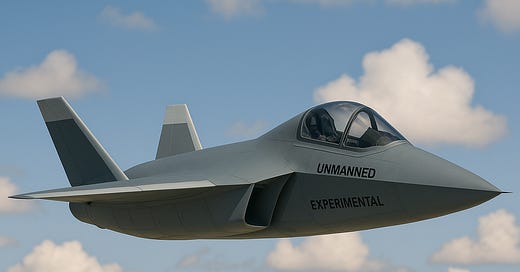In October 2023, I put out New Frontiers in Defense Tech .
It’s gotten rediscovered recently, and we wanted to update it with some events, thoughts and experiences since then. Needless to say, quite a few things have changed. But fundamentally, the conclusion remains the same. It’s just easier for everyone to see. We’re not a defense tech fund, we invest into Sovereign Compute companies, some of which are highly relevant to defense.
This post is an abbreviated version of a longer research piece on our beta-launched research platform—Kepler. Beyond the research we're conducting internally, we're also excited to share that the public can now access our research findings through the platform. This post is the first in a series of articles that will explore our research on Sovereign Computation. Here’s Alex Patow’s run down of some early features:
A Brief History
The war in Ukraine is not an isolated geopolitical flashpoint but a continuation of centuries of conflict rooted in the geography and power dynamics of Eastern Europe. Russia’s invasion must be understood in the context of a 500-year history of invasions, occupations, and shifting alliances. This historical perspective underlines the enduring strategic importance of the buffering function states like Ukraine perform, to the benefit of all of European democracy, and highlights the long-term fragility of peace on the European continent. In light of growing instability, Europe can no longer rely on U.S. military guarantees as it did throughout the post–World War II era. Transatlantic cracks, fueled by political uncertainty in Washington and a pivot toward Asia are forcing Europe to re-evaluate its security posture, defense capabilities, and industrial resilience.
New Defense
We would like to introduce the concept of New Defense, which is a generational shift in how Europe must build, fund, and deploy defense capabilities. New Defense refers to a new breed of technology-first, venture-backable defense startups that operate with speed, adaptability, and technical excellence. Unlike legacy defense primes, New Defense companies are driven by rapid iterations from the field, modularly designed, and software-centric. Enabled by inflection points in sensor tech, autonomy, distributed manufacturing, and digital infrastructure, these startups represent the future of defense innovation.
Challenges
Structural challenges persist. Europe’s defense ecosystem is fragmented across national lines, leading to inefficient procurement practices, protectionist tendencies, and a limited market for early-stage companies. Legacy defense primes dominate contracting, while startups struggle with burdensome regulations, opaque requirements, and the infamous “valley of death” between prototyping and scaled deployment. Moreover, cultural and political divergences among EU members hinder the formation of a unified defense-industrial strategy.
Opportunities
Yet significant change is underway. Defense spending across Europe is rising sharply, with over €1.3 trillion mobilized for defense, infrastructure, and strategic resilience. Public sentiment is shifting in favor of military investment, particularly in Eastern Europe (esp. those with a border to russia). Institutional support for cross-border collaboration and SME access is growing, exemplified by programs like EDIRPA. Simultaneously, battlefield dynamics in Ukraine are demonstrating how cheap, attritable systems (e.g., drones) can outperform legacy systems, provided they are developed and deployed with urgency.
What A Venture-Backable Defense Company Looks Like
Against this backdrop, venture capital has a critical role to play. Traditionally government-financed projects are not able to move at the same speed as private capital paired with elite talent. Startups can move faster, innovate at the edge, and build systems that are good enough, cheap enough, and scalable enough to meet the evolving needs of 21st-century warfare. We identify three types of venture-backable defense companies: (1) vertically integrated system builders that replace primes with faster, modular platforms; (2) horizontal component companies that supply critical subsystems such as AI targeting, GNSS-denied navigation, and propulsion; and (3) deep tech dual-use companies that spin out frontier technologies with civilian and military applications.
This thesis is also a call to action: Europe must embrace a defense innovation culture, one that rewards speed over perfection, iteration over inertia, and collaboration over siloed nationalism. Each nation can’t build their own top performing drone company. In the case of Ukraine, agile procurement models and field-led innovation have proven decisive. Similar models must be embraced across Europe. The convergence of geopolitical urgency, industrial potential, and technological progress offers a rare opportunity to reshape European defense.
Conclusion
New Defense is not only a market trend, it is a strategic imperative for European sovereignty, peace, and prosperity. By building the technological and industrial foundations of a resilient defense ecosystem, Europe can ensure it is not only protected but also prepared to lead in an increasingly contested and multi-polar world.
Thanks to Toby Stone, Benjamin Wolba, Larysa Visengeriyeva, and Eveline Beer for notes and comments.








